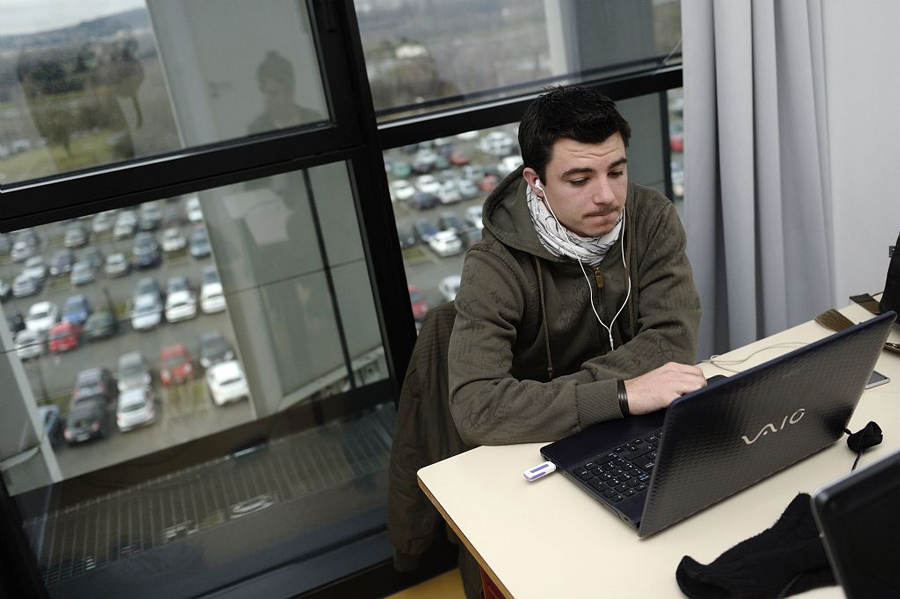Mainstreaming OSH into education
Training future employees and employers
INRS coordinates national and regional partnerships to develop occupational health and safety teaching in a range of initial training courses. The target audiences are students at vocational and technical schools and in higher education, at engineering and management schools and universities.

© Claude Almodovar for INRS
Vocational teaching
The rate of occupational accidents in the 18-24 age category is double the average. All jobs combined, the rate of occupational accidents is particularly high for young people and new recruits. They represent 11% of all employees but 20% of workplace accidents.
To support the process of incorporating occupational health and safety learning in vocational and technical education, INRS coordinates a set of actions at the national level aimed at:
- Integrating OSH into new or upgraded curricula,
- Training teacher trainers (basic prevention skills, first-aid at work, prevention of risks related to physical activity),
- Developing educational projects to facilitate the transfer of OSH knowledge to real work situations,
- Designing and promoting learning tools adapted to specific qualification levels and fields of work,
- Helping various regional players implement teachers’ and instructors’ training plans.
Today, most of the 600 diplomas in vocational and technical education incorporate occupational health and safety learning. An annual influx of 350,000 students receives this training.
In addition, for four years now, INRS has invited vocational high schools and apprentice centres to make a statement about occupational risks by taking part in the “Occupational safety and health: From school to work” video competition, the goal of which is to raise awareness among young people about the risks they are exposed to when they enter the workforce (as interns and student employees) and throughout their careers.

© Gael Kerbaol - INRS
Higher education
INRS actions also target lecturers and researchers at universities and grandes écoles who are preparing students for degrees not specialised in occupational health and safety.
The objective sought is the transfer of knowledge and prevention methods to these future engineers and managers. This transfer relies on a set of generalised skills (essential bases of occupational health and safety or “BES&ST”).
Programmes teach three fundamental skills:
- Identification in the workplace of individual, social, economic and legal issues in occupational health and safety,
- Incorporation of occupational risk prevention in day-to-day and project management,
- Improvement of occupational health and safety management in businesses.
- Implementation involves general learning in occupational health and safety in addition to more specialised modules where necessary (equipment and workplace design, occupational health and safety management, etc.). For it to be effective, this teaching approach includes a variety of methods (classes, tutorials, practical exercises, internships, projects) and involves instructors both from and outside of the higher learning establishment concerned.
On 10 October 2016, INRS and the Occupational Risks Directorate of Social Security signed a partnership with the Polytech engineering schools network (14,000 students) to further incorporate occupational health and safety (OHS) issues into the education received by future engineers.
As part of a new initiative which began in 2016, INRS, the Occupational Risks branch of Social Security and the CNES&ST (National Council for Occupational Health and Safety Education) award “Occupational Health and Safety” labels to higher learning establishments which have implemented an exemplary approach to educating their students about occupational risk prevention.
